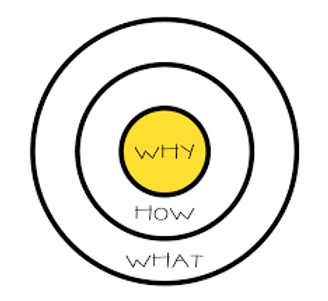“Kando” is a Japanese term that roughly translates to “emotion.” Kando is often used by companies in the United States, such as Sony Entertainment. It has been incorporated into Sony’s core philosophy and appears in its mission statement. To dive deeper into the term Kando, per Sony, it is an expressive energy that empowers others via creativity and technology. The word Kando and what it represents are vital factors in reaching today’s audiences via communication.
For my Senior Leadership Capstone, we watched a Ted Talk by Simon Sinek, an American Author, consultant, and inspirational speaker. The Ted Talk “How Great Leaders Inspire Action” examines a model called “The Golden Circle.” The circle aligns with the philosophy behind Kando.
Sinek starts by explaining the circle. On the inside of “The Golden Circle” is the question, “Why?” In other words, the reason why people buy products. In the middle of the circle is the question “How?” how the product sells. The outermost part of the circle is “What?” which represents the physical product that a business is selling. He does not spend much time discussing “How?” Instead, he focuses more on “What?” and “Why?”
Sinek argues it isn’t what you do that sells; it’s why you do it. Therefore, businesses are less successful than companies like Apple and speakers such as Dr. Martin Luther King, Jr. because they don’t work from the inside out (why to what); they work from the outside in (what to why).
Sinek uses scientific evidence on the human brain to support his argument. The neocortex distinguishes our rational and analytical thought; in other words, the “What?” Our Limbic brain controls our emotional and behavioral decision-making, or the “Why?” Humans develop trust (which is an emotion) through the Limbic brain. He describes this more closely as our “gut decisions.” Because human behavior does not make decisions from their neocortex (What?), it is more critical for companies to start their processes with the question “Why?”, then work from the inside out of the circle. In this way, their businesses will be more successful. This term Kando aligns with the “Why?” function of the circle.
I have been thinking about Kando since I read it, and it reminded me of my creative writing classes at the College of Charleston. Through my studies, I have created images to capture audiences’ emotions through word use. It is gratifying.
I learned a popular quote from my professor: “No emotion in the writer. No emotion in the reader.”
Kando is necessary. More broadly, business leaders need to learn to develop a deeper connection with their audiences in the world of communication.

